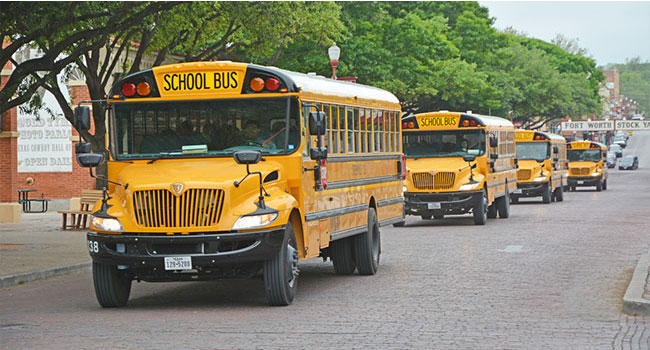
Bus Tracking App Allows Parents to Monitor Child’s Location in Real Time
DeSoto Parish School System is rolling out Edulog, a mobile app that lets users view bus routes and set up custom alerts for when a bus is leaving campus or arriving near a home.
- By Haley Samsel
- August 19, 2019
School districts across the country are consistently on the hunt for technology to improve student safety, and Louisiana’s DeSoto Parish School System is no exception. The district announced earlier this month that its entire school bus fleet would be equipped with tracking software that allows parents to monitor its routes in real time.
By the end of August, parents and administrators will be able to view the location of buses through Edulog, a mobile application that also allows users to communicate with bus drivers and set up alerts. The district plans to release a basic version and add updates throughout the year.
Larry Hall, the district’s transportation coordinator, told EdScoop that the decision to adopt the app came after officials evaluated several other apps, talked to officials around the country who have used the Edulog system and tested it out for themselves.
“We found it to be the app that we felt was going to be most beneficial for our parents,” Hall said. “[Parents] can set as many alerts as they would like. If they want to set an alert to know when the bus leaves the campus in the afternoon, they can do that, or they can set an alert to know when the bus is five miles from their home.”
The app, run by the company Education Logistics, has already been rolled out by districts in Alabama, Georgia, South Carolina and more, according to local news reports.
In the past, Hall said that schools in the district received many calls from parents wondering why the bus had deviated from its set schedule and where their child was.
“I can tell you after school gets started, probably about 90 percent of the calls have to do with the bus maybe being late or the bus came too early or anything along those lines,” he told EdScoop.
In addition to its use as a communication tool, the app also collects data from bus routes, which could help improve the district’s transportation planning, Hall said. The ultimate goal is to keep parents informed about their child’s location at all times, he added: “Now they will have that information at their fingertips.”
About the Author
Haley Samsel is an Associate Content Editor for the Infrastructure Solutions Group at 1105 Media.